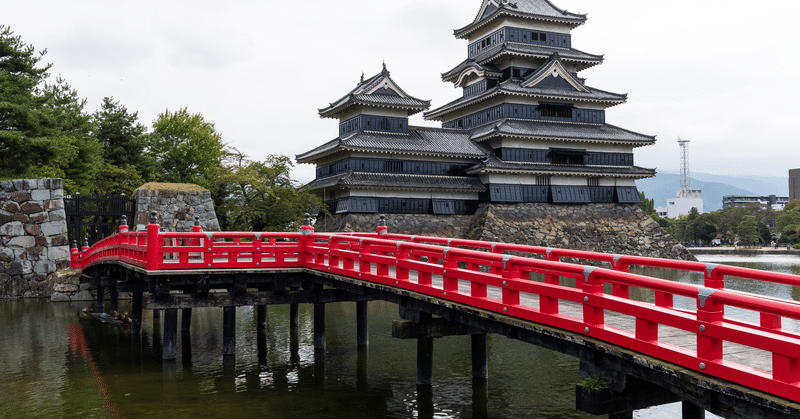
Castles in Japan and Their History

Introduction
Japan, a land steeped in history and culture, is home to some of the world's most magnificent castles. These structures, which once served as the residences of feudal lords and samurai warriors, offer a glimpse into the architectural and historical richness of Japan. Each castle has its unique charm and story, reflecting the turbulent yet fascinating history of the country. In this article, we will explore the most iconic Japanese castles and their histories, providing a deeper understanding of their significance and beauty.
Himeji Castle: The White Heron Soaring
Himeji Castle, also known as "Shirasagi-jo" or "White Heron Castle," is celebrated for its stunning white appearance and complex design. It stands as a masterpiece of Japanese castle architecture and is a UNESCO World Heritage Site.
History
Origins: The castle's origins can be traced back to 1333 when a fort was first built on the site by Akamatsu Norimura. The present structure was significantly expanded by Toyotomi Hideyoshi in 1581 and completed by Ikeda Terumasa in 1609.
Architectural Marvel: Himeji Castle's distinctive white plastered walls are not only beautiful but also serve as fireproofing. The castle complex consists of 83 buildings, connected by a series of gates, corridors, and pathways designed to confuse and deter invaders.
Matsumoto Castle: The Elegant Crow
Matsumoto Castle, known as "Karasu-jo" or "Crow Castle" due to its black exterior, is one of Japan's most visually striking and well-preserved castles. It is located in Nagano Prefecture and is designated as a National Treasure.
History
Construction: The construction of Matsumoto Castle began in 1592 under the orders of Ishikawa Kazumasa and was completed by his son, Yasunaga, in 1614.
Unique Features: The castle's main keep (tenshu) is a six-story structure that offers panoramic views of the surrounding mountains. The moat and outer walls create a picturesque setting, particularly beautiful during cherry blossom season.
Osaka Castle: A Symbol of Resilience
Osaka Castle is a historic symbol of power and resilience in the heart of Osaka. Built by one of Japan's most famous unifiers, Toyotomi Hideyoshi, it has played a pivotal role in Japanese history.
History
Construction and Reconstruction: Originally constructed in 1583, the castle was destroyed in 1615 and rebuilt by Tokugawa Hidetada. It was again reconstructed in the 1930s after being damaged during various conflicts.
Modern Appeal: Today, Osaka Castle is a major tourist attraction with a museum that houses historical artifacts and displays about the castle's history and the Toyotomi family. The surrounding park is a popular spot for cherry blossom viewing.
Nagoya Castle: Golden Splendor
Nagoya Castle, with its iconic golden shachihoko (mythical tiger-headed carp) adorning the roof, is a symbol of Nagoya's history and culture.
History
Foundation: Built in 1612 by Tokugawa Ieyasu, the castle served as a strategic point and a symbol of the Tokugawa clan's power.
Restoration: The original castle was destroyed during World War II, but it was meticulously reconstructed in 1959. The castle now includes a museum with exhibits on the Tokugawa era and the castle's construction.
Nijo Castle: The Shogun's Kyoto Residence
Nijo Castle in Kyoto offers a glimpse into the luxurious lifestyle of the Tokugawa shoguns. It is known for its beautiful gardens and unique "nightingale floors."
History
Construction: Tokugawa Ieyasu commissioned the castle in 1603, and it was completed by his grandson, Iemitsu, in 1626.
Distinctive Features: The castle is renowned for its "nightingale floors," which chirp when walked upon to alert residents of intruders. The Ninomaru Palace within the castle grounds is an exquisite example of Momoyama architecture, featuring ornate sliding doors and wall paintings.
Conclusion

Japanese castles are more than just historical landmarks; they are enduring symbols of the country's rich cultural heritage and architectural brilliance. Each castle tells a story of Japan's feudal past, filled with tales of samurai, shoguns, and battles. Visiting these castles allows travelers to step back in time and experience the grandeur and complexity of Japan's history. Whether you are an avid historian, an architecture lover, or a curious traveler, exploring Japan's castles is an unforgettable journey through the nation's storied past.

JTI | Japan Travel Itinerary
Empowering your travel dreams with bespoke itineraries crafted by our expert team, independent of vendors for truly personalized experiences.
この記事が気に入ったらサポートをしてみませんか?
